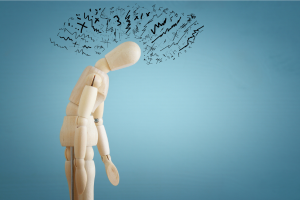Anxiety: An Emotion to be Listened to, not a Symptom to be Eliminated
One in Three People Will Experience Anxiety

According to one of the most reputable surveys of its kind, the National Comorbidity Study Replication (NCS-R), an estimated one in three people will experience an anxiety disorder in their lives. Bearing in mind that in 1980, the Diagnostic and Statistical Manual of Mental Disorders (DSM) estimated lifetime prevalence rates of anxiety disorders in the 2 to 4% range, it’s safe to say that the diagnosing of anxiety disorders has spiked in recent decades. Is it possible that rising rates of anxiety disorders reflect a widespread lack of appreciation for expectable levels of anxiety that are part of human variation, or a pathologizing of innate and normal anxious traits?
Where Does Anxiety Come From?
Moreover, in the mental health field have we moved too far away from the Freudian idea that anxiety signifies repressed emotions that need to be uncovered and expressed, as well as the humanistic idea that anxiety is the emotional outcome of ignoring needs for greater meaning, purpose, and personal fulfillment in our life, favoring a medical model approach that simply categorizes anxiety as a symptom of a disorder—driving the diagnostic numbers upwards?
Homo sapiens is an anxious species. We are wired to be “better safe than sorry,” biologically primed to expect danger where it probably doesn’t exist—an alert system preparing us to act protectively on those extreme occasions where serious danger pops up. Many common phobias and obsessions probably would have had prehistoric survival value, but in our modern technological society are simply a nuisance. Take social anxiety. In ancient environments there would have been survival value in avoiding talking with strangers and reserving one’s trust for those closest to us. Dread of public speaking in front of others who might exploit your mistakes and weaknesses for gains in social status and group hierarchy would have been reasonable.
Social Anxiety and Fear
The upshot is, in all likelihood, we humans are genetically pre-programmed to prefer socializing with known intimates than unknown strangers, and, unless absolutely necessary, to avoid speaking in front of a crowd where one’s competence is being scrutinized. Some of us, more than others, have dispositional traits leaving us feeling exposed to judgment and negative evaluation in unfamiliar social situations. This is an ancient fear. This realization should help inform an approach to mild cases of social anxiety that does not automatically see it as a product of a brain disorder, or evidence of a mental illness, requiring treatment of some sort. Where otherwise normal people with social anxiety traits coach themselves to avoid occupations, educational goals, and social situations that magnify their vulnerabilities; or, at the very least, latch onto coping skills to get them through unavoidable life circumstances that confront them with elevated social anxiety.
When anxiety is reduced to a symptom to be medicated away, or an aberrant emotion based on cognitive distortions in need of correction though cognitive behavior therapy (CBT), the all-important representational value of that anxiety can be lost. From a humanistic standpoint, anxiety can imply an urgency to pay attention to unfulfilled personal longings, untapped creative potential, overlooked needs for deeper meaning and purpose to be derived from a career, and desires for greater compatibility in one’s love life. Anxiety sometimes signifies a person’s life priorities are off kilter. It’s a nagging inner tension that will persist until real-life changes are made that attend to deeper needs for meaning, purpose, creativity, and emotional depth and connection in one’s key relationships.
Exploring Underlying Concerns
Freud’s original conceptualization of anxiety as the global emotional outgrowth of thwarted sexual and aggressive urges has gotten bad press in recent decades. That’s unfortunate.
Not uncommonly in my clinical practice over the years when I explore the underlying concerns by clients suffering panic attacks, something of a sexual or aggressive nature is being overlooked or
denied. For instance, a 26 year-old male client of mine, whose social anxiety had been so debilitating that he dropped out of medical school, recently looked up his old girlfriend. He was coming out of a period of extreme social isolation and avoidance of any romantic involvement. For the first time in his life, he began experiencing recurring panic attacks. Once we started to look at his fear of becoming sexually involved with and emotionally attached to his ex-girlfriend, put in a dependent position, and potentially engulfed, and trapped by his sexual and emotional reliance on her, as well as the reverse, his panic attacks abated.
Another client had a full-on panic attack in my office in the context of his ex-wife berating him over child support payments. During the subsequent session it became clear that his panic attack was really a stifled rage attack. He was furious at what he perceived was his ex-wife’s mischaracterization of him as greedy, when he had been, in actuality, generous in his child support payments, but feared giving voice to his fury in her presence.
Lasting Solutions
It’s in vogue these days to take a mindfulness approach to anxiety; to not indulge troubling thoughts; to see them as meaningless; to let them just be. Obviously, there’s a place for not engaging and
concretizing anxious thoughts that are unanchored to realistic dangers. But, perhaps we have gone too far. When the representational and functional significance of anxiety are viewed as irrelevant and ignored, people are deprived of self-knowledge sources that are inroads to lasting solutions to anxiety.

In this Webinar: It’s time to stop letting anxiety rule you. In this program, Elisha Goldstein invites you to experience 11 essential remedies…










